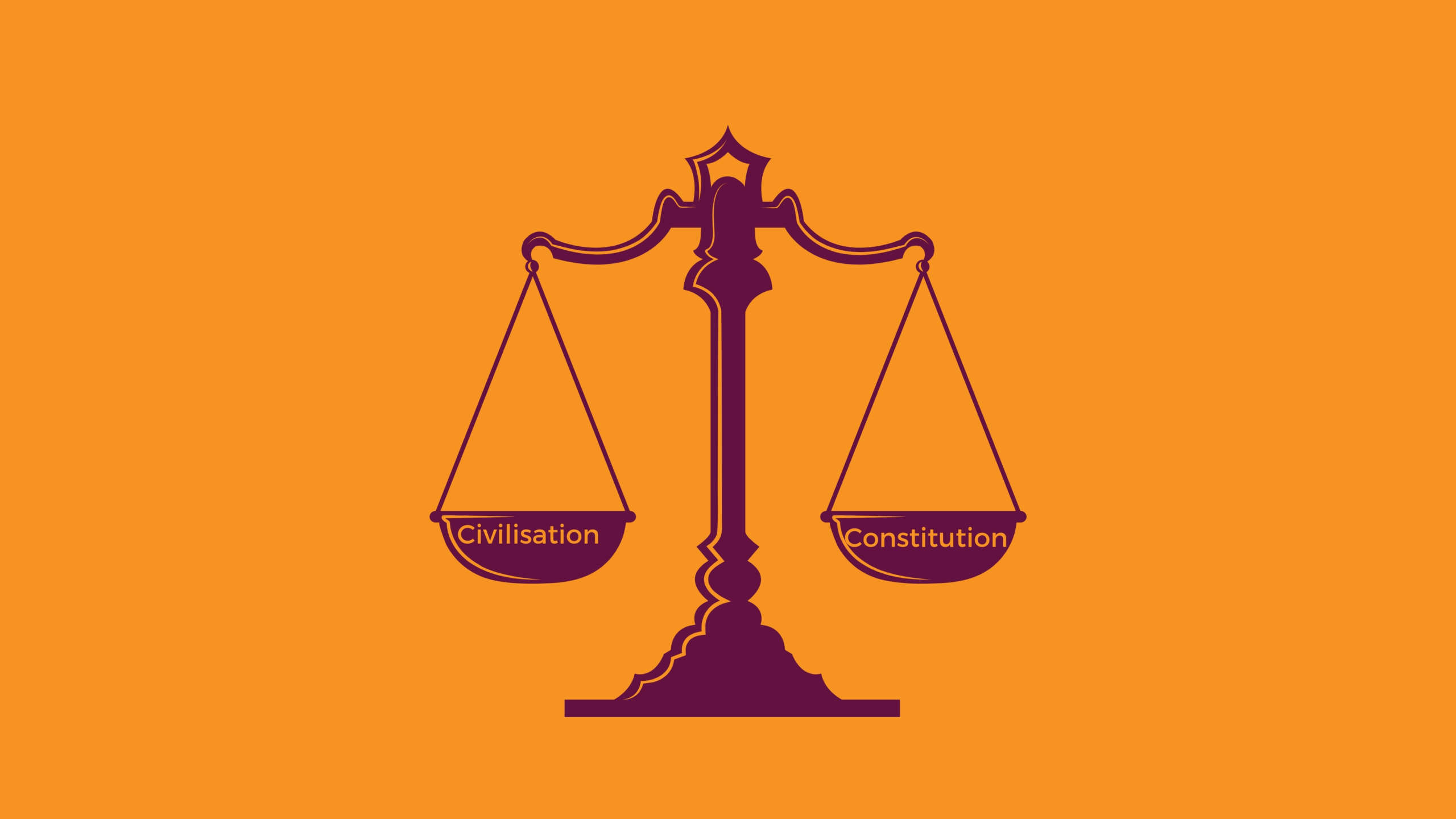On the occasion of National Constitution Day, we ponder upon the question of the meaning of humanity, and liberty for different civilisations. While assessing if our constitution recognises our thousands of years old civilisation.
By Veerender Kumar, Research Associate, at Rashtram & Biplabjoy Purkayastha, Program Manager, Academic Operations at Rashtram
The land that gave the world the universally acclaimed principles of liberty, equality and fraternity, is once again making headlines. This time, it is the first of the trio i.e. liberty that is a subject of a massive global debate. The liberty of unregulated speech and expression, exercised by the celebrated French satirical magazine Charlie Hebdo in the form of its right to publish cartoons of Prophet Mohammad seems to have attracted eyeballs in some sections of the Muslim world and ultimately led to the beheading of school teacher Samuel Paty and stabbing of two other French citizens. The incident sent shockwaves across the world and triggered debates on the limits of liberty.
Liberty, essentially, has been intimately linked to the democracies across the world, though, in various degrees. France practices liberty with very minimal limitations, which in this case, seems to have contradicted with the established beliefs of a section of the French population. It, thus, becomes a strong case to ponder upon the subtle question of the primacy of religious ideals over national values. Is Islamic belief above the French values of liberty? How do we reconcile the two opposing stands from the point of a view of a French citizen who is also a Muslim? Is this another flare up of Samuel P. Huntington’s idea of the Clash of Civilisations?
The question finds resonance in India also. What is the Indianness that we are seeking in our citizens? What are the values attached to such an identity? Is the source of Indian state i.e. the Constitution of India able to answer these complex questions satisfactorily?
Answer to these questions requires multi-dimensional analysis. First, the Constitutional provisions themselves are ambiguous or inconsistent, for example:
- Constitutional provisions regarding religion based rights (Article 25-30).
- Non-Uniformity of Personal Laws due to non-implementation of Article 44.
- Tribal rights subsuming religious and cultural ones (5th and 6th Schedule Areas).
Second dimension of this analysis is the applied aspect of the constitutional provisions, for example:
- Article 19 (2) which gives discretionary powers to bureaucrats to define public order and morality.
- Article 21A which gives Right to Education while at the same time creates religion-specific regulatory infrastructure through a complex combination of RTE Act 2009, Article 29 and 30.
- Article 25, 26 and 29 (1) which are presumed to be the basis of religion-based personal laws.
- Article 26 which is used to facilitate government control of ‘ONLY’ Hindu religious institutions.
- Article 38, 39 which are used to provide exclusive discriminatory MINORITY schemes.
- Article 19, 51 which are used to prevent honest criticism of other countries which hurt Indian civilization.
- Article 28 which is used to prevent the teaching of Indian classical literature by declaring all of them RELIGIOUS.
- Debatable constitutional provisions used to enact The Places of Worship Act 1991.
The third dimension of this analysis is whether the state can define morality (Article 19 (2)) at all because defining morality falls in the domain of religions and the Constitution can’t behave like a religious text. Even if we allow the state to define morality of its own, then, how this would fit in the Indian case which has so many contesting moralities which require the Constitution to reconcile with the idea of dharma itself.
Fourth dimension of this analysis is whether the Indian Constitution recognises the ancient origin of Indian civilization. If it recognizes such origin, then what provisions it is making to:
- Preserve, protect, restore and promote the Indian civilization and its footprints spread across the world – from Turkey to Polynesia, from Japan to Kenya.
- Establish fail-safe mechanisms so that India is not colonized again and Indian civilization is not made subservient again.
- Enable Individuals to attain the four Purushaarthaas – Dharma, Artha, Kaama and Moksha.
- Resolve the fundamental conflicts among civilizations, especially the conflict of Indian civilization with expansionist ones like Abrahamics.
- Fulfil the civilizational goal of India – show spiritual path to Humanity and take every person through it.
Underlying all these analyses, there is another analysis which is the most fundamental – does Indian Constitution recognize the existence of Indian Civilization at all? Is merely posturing ‘India that is Bharat’ (Article-1) enough? Isn’t it necessary to define who is Indian and what are his/her characteristics before jumping in to the Citizen’s Rights (Articles 5-11) or making a façade “WE THE PEOPLE OF INDIA” (Preamble)? Let us think!
Meanwhile, Happy Constitution Day!!

